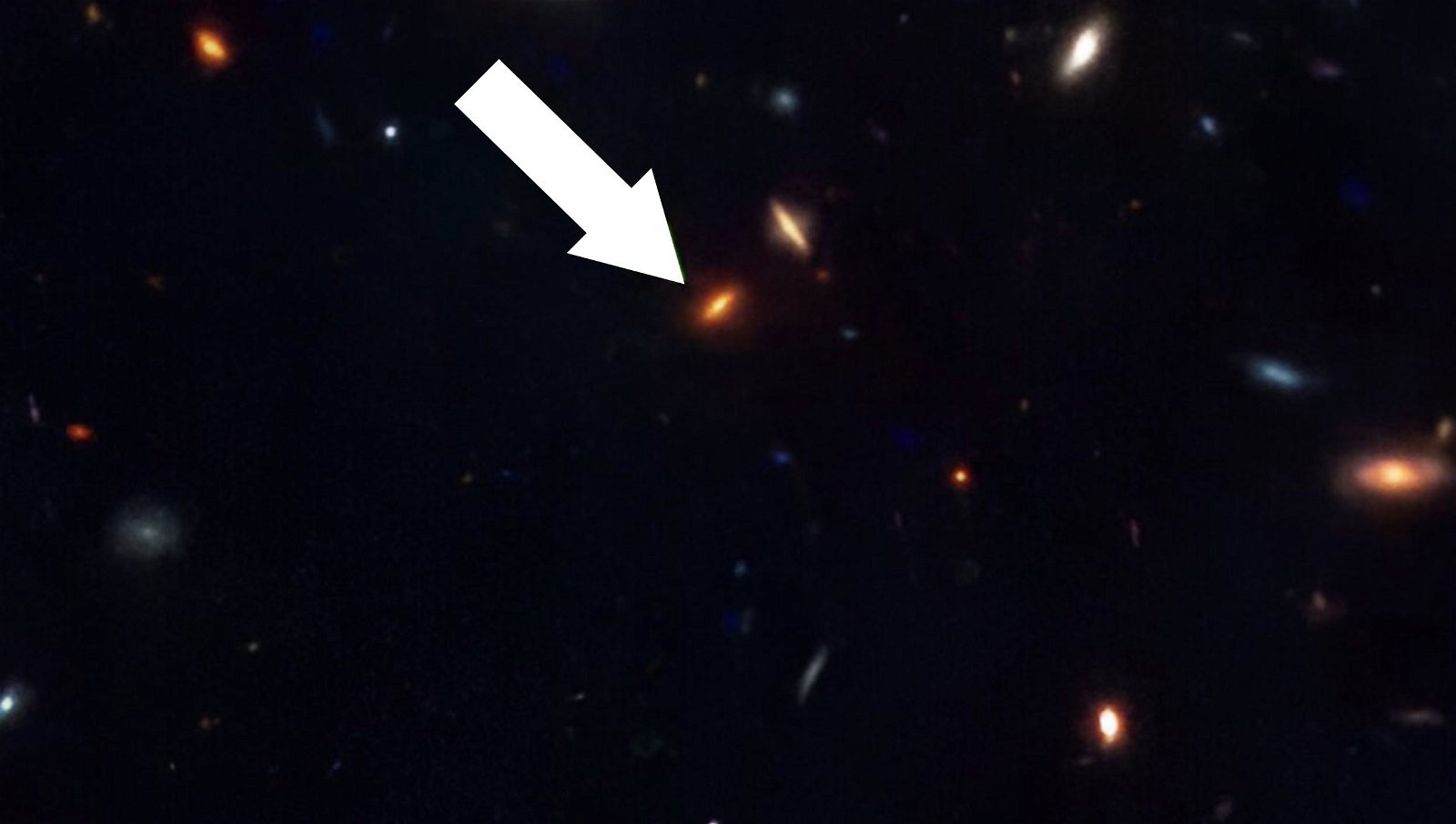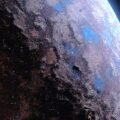NASA’s James Webb Space Telescope has helped reveal an 11-billion-year-old discovery more massive than the Milky Way, which astronomers say should not exist.
The unprecedented discovery, which could upend our current understanding about the formation of galaxies, and also require scientists to rethink the mysterious nature of dark matter, involves an extremely old—and massive—galaxy that existed in the early universe which was home to an ancient population of stars.
What makes the discovery unique and perplexing to astronomers is that the stars observed in this primordial galaxy should not have been able to form according to current models, because there would not have been enough dark matter accumulated to enable their genesis.
The discovery is the latest in a series of findings by the James Webb Space Telescope since its launch that are challenging our existing theories about the universe, and broadening our understanding of cosmic phenomena.
According to Karl Glazebrook, a Distinguished Professor at Swinburne University of Technology and leader of an international team behind the discovery, the new findings were several years in the making and required separate observations from two of the world’s most massive telescopes to tease out enough data to determine its age through spectroscopic observations.
“We’ve been chasing this particular galaxy for seven years,” Glazebrook said in a statement, “and spent hours observing it with the two largest telescopes on earth to figure out how old it was.
However, according to Glazebrook the dormant galactic monster “was too red and too faint, and we couldn’t measure it.”
“In the end, we had to go off Earth and use the JWST to confirm its nature,” Glazebrook said.
Present models about galactic formation are in conflict, since ongoing observations that include discoveries that the James Webb Space Telescope have helped enable continue to challenge existing theoretical ideas. These include longstanding tenets of modern astrophysics like the prediction that massive galaxies were unlikely to be as prevalent in the early universe.
However, this existing paradigm has been continually shaken by discoveries involving enormous quiescent (i.e., dormant) galaxies that astronomers have discovered as early as just one or two billion years after the birth of the universe, which Glazebrook and his colleagues say are particularly constraining on current theoretical models, given that these galaxies formed as much as 500 million years earlier than expected.
Presently, only a limited number of models astrophysicists rely on allow massive galaxies to form this early.
Glazebrook says he and his colleagues spent an enormous amount of time and effort developing a proper method for processing newer data that the James Webb Space Telescope had collected, which itself was an extension of earlier work involving infrared sky surveys that began more than a decade ago which ultimately led to the discovery that this particular galaxy, ZF-UDS-7329, was indeed unusual. However, repeated attempts to study it by employing ground-based spectroscopy at the W.M. Keck Observatory and the Very Large Telescope in northern Chile failed to confirm it.
“We are now going beyond what was possible to confirm the oldest massive quiescent monsters that exist deep in the universe,” said Dr. Themiya Nanayakkara with Swinburne’s Centre for Astrophysics and Supercomputing, who led the spectral analysis of the Webb data.
“This pushes the boundaries of our current understanding of how galaxies form and evolve,” Nanayakkara said. “The key question now is how they form so fast very early in the universe, and what mysterious mechanisms lead to stopping them forming stars abruptly when the rest of the universe doing so.”
The new findings also raise new questions for astrophysicists about the nature of dark matter and how it concentrates, which are fundamental components of our current understanding of galaxy formation.
“Galaxy formation is in large part dictated by how dark matter concentrates,” said Claudia Lagos, and Associate Professor from the University of Western Australia node of the International Centre for Radio Astronomy Research (ICRAR). Lagos and her facility were instrumental in helping to model the concentrations of dark matter and their theoretical evolution for the team’s study.
“Having these extremely massive galaxies so early in the universe is posing significant challenges to our standard model of cosmology,” Lagos said. Mainly, this is because astrophysicists had not previously thought dark matter structures massive enough to facilitate galaxies as large as ZF-UDS-7329 could have existed in the early universe. Thus, additional observations will be required in order to help piece together the newly emerging puzzle of these early massive monsters.
“Galaxy formation is in large part dictated by how dark matter concentrates,” Lagos said, adding that the recent observations of such massive stellar formations appearing so early “is posing significant challenges to our standard model of cosmology.”
“We don’t think such massive dark matter structures as to host these massive galaxies have had time yet to form,” she said.
“Although it is very striking, it is only one object,” Glazebrook concedes of his team’s discovery. “But we hope to find more, and if we do, this will really upset our ideas of galaxy formation.”
Glazebrook and the team say that future observations will likely help them to better understand this cosmic mystery, and thereby possibly reveal new insights into galactic formation and the role dark matter plays in it.
“More observations are needed to understand how common these galaxies may be,” Lagos added, “and to help us understand how truly massive these galaxies are.”
Currently, an unedited version of the team’s new paper, “A massive galaxy that formed its stars at z ~ 11,” appeared in the journal Nature and was published on February 14, 2024. The complete paper can be read in its entirety at arxiv.org.
Micah Hanks is the Editor-in-Chief and Co-Founder of The Debrief. He can be reached by email at micah@thedebrief.org. Follow his work at micahhanks.com and on X: @MicahHanks.

